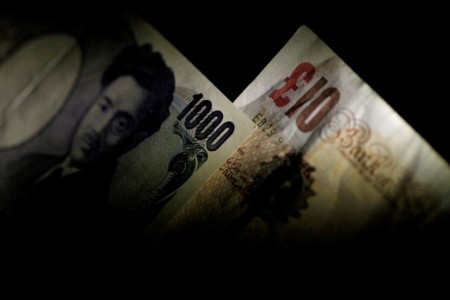




Quarterly Economic Growth Release: More BSP cuts to come
 DOWNLOAD
DOWNLOAD

Monthly Economic Update: Fed catches up
 DOWNLOAD
DOWNLOAD

Inflation Update: Steady and mellow
 DOWNLOAD
DOWNLOAD


Sterling climbs after tax plan reversal, dollar also weaker against other major currencies

NEW YORK/LONDON, Oct 3 (Reuters) – Sterling jumped against the dollar on Monday after Britain reversed a plan to cut the highest rate of income tax, and the dollar was also down against other major currencies.
The pound rose against the dollar after media reports of the u-turn to its highest level since Sept. 22, the day before British Finance Minister Kwasi Kwarteng roiled markets with a new “growth plan” to cut taxes and regulation, funded by vast government borrowing.
Sterling was last up 1.4% at USD 1.1320.
“Sterling is getting a boost as the UK tries to reverse some of its tax cuts,” Amo Sahota, director at Klarity FX in San Francisco, said.
British finance minister Kwasi Kwarteng said he would publish details “shortly” on how he planned to bring down public debt as a share of economic output over the medium term.
The dollar, which is up sharply for the year, weakened also against other major currencies.
But, “the big macroeconomic themes have not changed, so take this for what it is, it’s a new quarter and a opportunity for a bounce in equities and a little unwinding of the US dollar,” Sahota said.
Elsewhere, the Japanese yen weakened past the 145 mark for the first time since Sept. 22, when authorities intervened to prop up the currency.
The dollar was last just slightly lower at 144.69 yen.
Monday’s fall came as finance minister Shunichi Suzuki said Japan stood ready for “decisive” steps in the foreign exchange market if excessive yen moves persisted.
The yen has been weakening due to Japan’s policy of keeping interest rates pinned down at a time when they are rising elsewhere. After much speculation, authorities last month intervened in markets, spending a record of 2.8 trillion yen (USD 19.7 billion) to prop up the currency.
“The central banks are getting more active in trying to defend their currencies,” Klarity’s Sahota said.
The greenback was down against China’s offshore yuan and hit a low for the day of 7.0901.
“I think the yuan has strengthened enough that it will give some peace to the People’s Bank of China at this time,” Sahota said.
The euro rose 0.3% to USD 0.9825. Data earlier showed manufacturing activity across the euro zone declined further last month.
Reports that the OPEC+ group of oil producers is discussing potential output cuts of more than 1 million barrels per day also weighed on the currency, given Europe’s precarious energy situation.
The Australian and New Zealand dollars gained ground ahead of expected rate hikes by their central banks this week with the Aussie up 1.6% at USD 0.6515 and the kiwi 2% higher at USD 0.5717.
Investors were watching for more news on Credit Suisse, whose shares slid on Monday, reflecting market concerns ahead of a restructuring plan due to come with third-quarter results at the end of October.
(Additional reporting by Rae Wee; editing by Jason Neely, Andrew Heavens, David Evans and David Gregorio)
This article originally appeared on reuters.com





 By Reuters
By Reuters